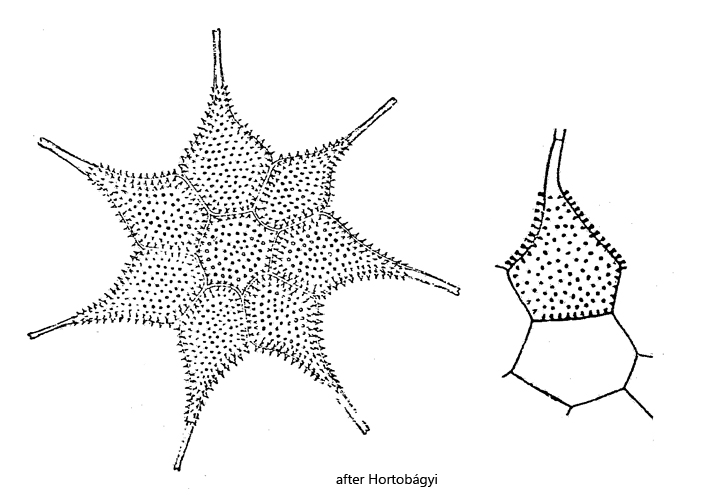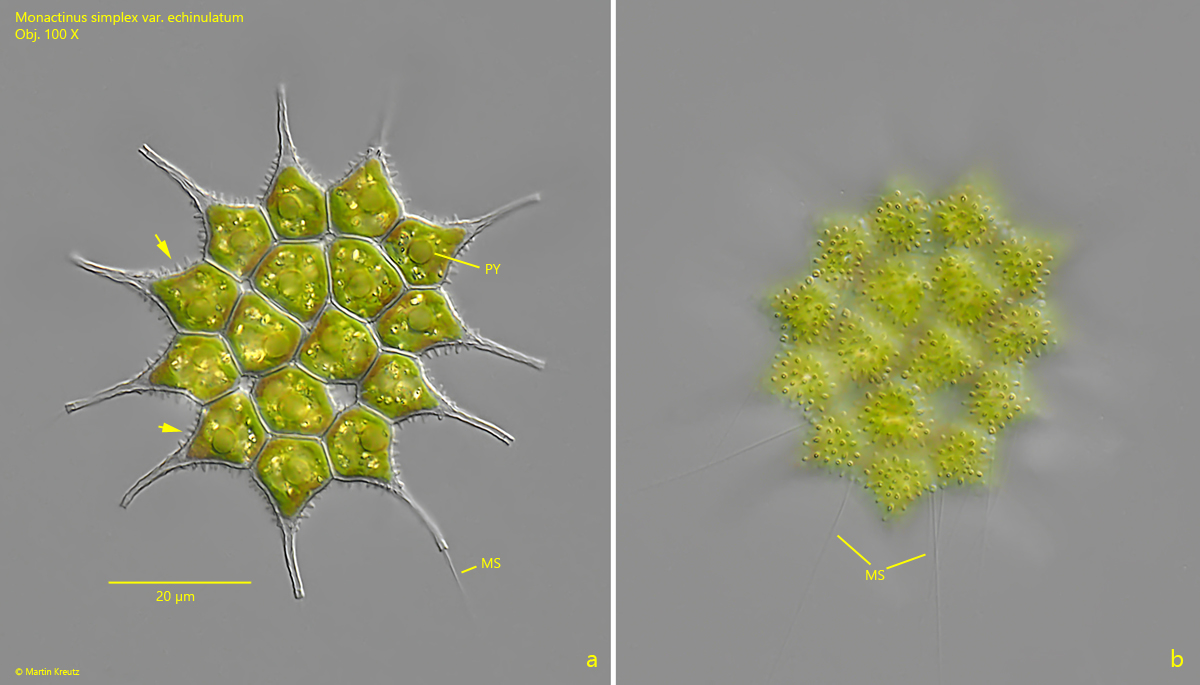Monactinus simplex var. echinulatum
(Wittrock) Pérez, Maidana & Comas, 2009
Most likely ID: n.a.
Synonym: Pediastrum simplex var. echinulatum, Pediastrum sturmii var. echinulatum
Sampling location: Pond of the waste disposal company Constance
Phylogenetic tree: Monactinus simplex var. echinulatum
Diagnosis:
- coenobium star-shaped, flat and single-Iayered
- diameter coenobium up to 250 µm
- coenobium of 4, 8, 16, 32, 64, (128) cells
- coenobium covered with distinct warts or short spines
- marginal cells with a single, gradually tapering projection
- inner cells polygonal shaped, concentrically arranged, sometimes with small intercelluar spaces
- marginal cells occasionally bearing tufts of mucilaginous spines
- one chloroplast, filling the cell
- single pyrenoid

Monactinus simplex var. echinulatium is described as not very common (Komárek & Fott, 1983). However, in the pond of the waste disposal plant of Constance I found this form in large quantities in the plankton in September 2023.
The genus Monactinus is easily recognized because the marginal cells have only one horn-shaped process. In the form Monactinus simplex var. echinulatum, the gaps between the inner cells are either absent or very small. As a distinctive characteristic, the cell walls of the coenobia are covered with distinct warts or short spines. In my population these were short spines of 0.7 – 1.2 µm length (s. fig. 1 a-b).

Fig. 1 a-b: Monactinus simplex var. echinulatum. D = 65 µm. Two focal planes of a coenobium of 16 cells. The coenobium is covered with distinct, short spines (arrows) with a length of 0.7 – 1.2 µm. Note the delicate mucilaginous spines (MS) arising from the marginal cells. PY = pyrenoid. Obj. 100 X.